Table of Contents |
The architecture that you will be looking at today comes from the Mughal empire, which lasted from its founding by Babur in 1526 to its official end in 1757. This lesson’s geographical focus is on India, specifically Delhi and a little bit southeast to the location of the Taj Mahal.

Mughal architecture has, like its people, ties to a number of different cultures. However, it’s assembled in a way that feels distinct and unique. Elements of Persian, Turkish, Islamic, and Indian architecture can be found throughout the following structures, which are three of the most impressive and important examples of Mughal architecture. As you examine each, compare them to identify stylistic similarities between them.
Humayun’s Tomb, in Delhi, India, is a beautiful red sandstone and white marble structure that was commissioned as a monument to the Humayun, the second emperor of the Mughal Empire and son of its founder Babur. It’s a perfect example of the Islamic influence of symmetry on the design of Mughal architecture.
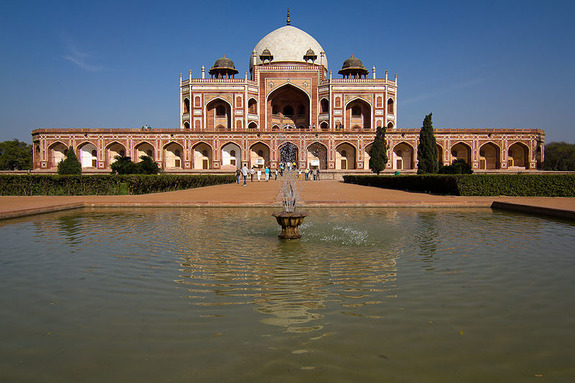
1569-1570 (commissioned)
Red sandstone and marble
Delhi, India
This structure, like the Taj Mahal, which you will see a bit later, was built within long quadratic gardens called charbagh that surround the main structure. They’re believed to be a metaphor for paradise, and the central structures function as a throne of God within this paradise. As monumental tombs, this was fitting, given that the holiest place to be buried in Islam was beneath the throne of God or Allah.
Notice the use of the chhatri, which is the domed pavilion shown in the image below.
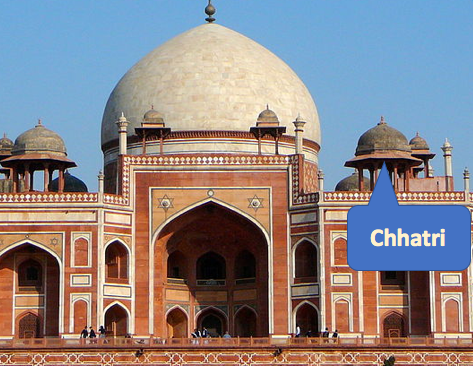
In addition to the chhatri, another common design element that you’ll see throughout Mughal architecture is the use of a pointed arch.
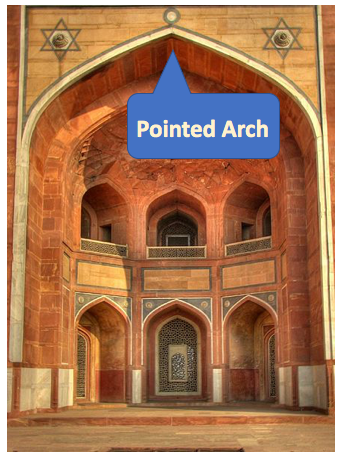
The next example is the Jama Masjid mosque in Delhi. Notice, again, the use of red sandstone and white marble, which is one the most unique aspects of Mughal architecture.
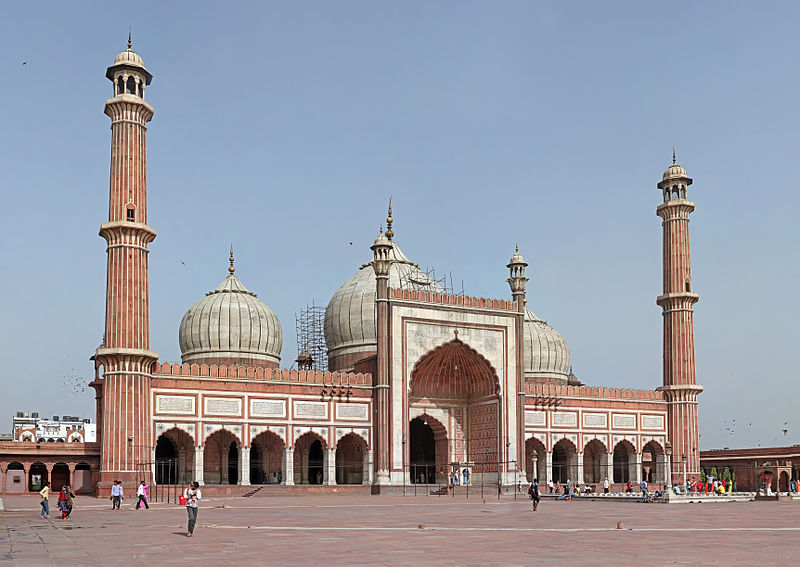
1650-1656
Red sandstone and white marble
Delhi, India
The pointed dome, often referred to as an “onion dome” because of its distinctive, onion-like shape, is sometimes found in examples of architecture from Persia as well as Russia.
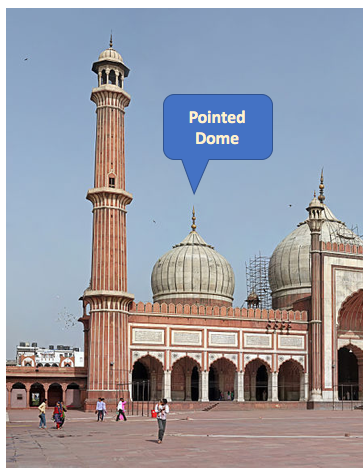
As you may recall from the first example, the chhatri is a small domed pavilion that can be found throughout Mughal architecture in various forms. Here it is, atop the minaret of the Jama Masjid mosque.
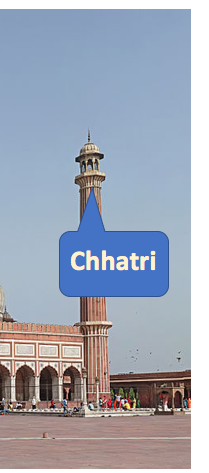
This mosque, the largest and one of the oldest examples in India, was built under the rule of Shah Jahan, the fifth emperor of the Mughal Empire. He was responsible for India’s greatest creation and one of the finest examples of architecture in the world, the Taj Mahal.
The epitome of Mughal architecture is, without a doubt, the incredible Taj Mahal, or crown of Mahal. Unquestionably one of the most beautiful examples of architecture in existence, it exemplifies the Mughal design ethic and serves as a truly moving tribute to the memory of a loved one, the third wife of Shah Jahan, Mumtaz Mahal. Taken as a whole, the structure is breathtaking. It’s built within a charbagh, like Humayun’s tomb, but it isn’t centered; rather, it’s pushed back.
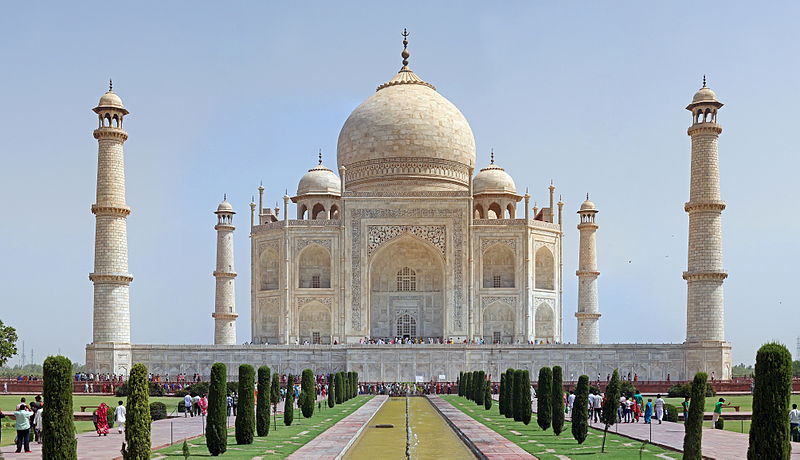
1632–1653
White marble (main structure)
Agra, India
The entire structure is an exercise in symmetry and proportion. Symmetrically balanced, the height and width are identical, with the main entrance—the iwan—and the dome being of equal height.
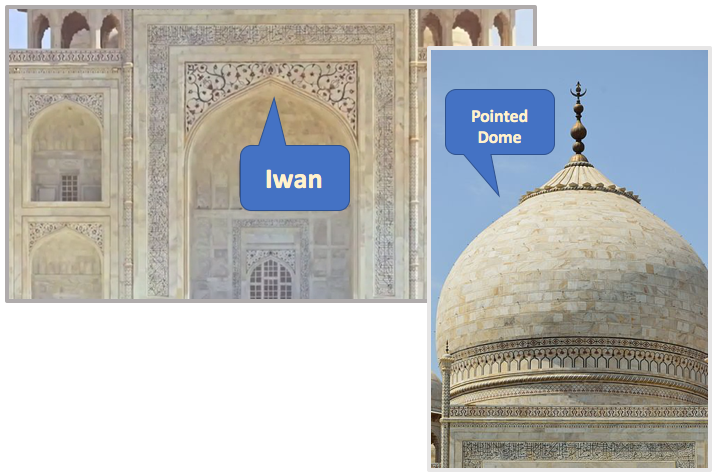
Here is a close-up of a chhatri at Taj Mahal.

The entire structure sits upon a marble platform with no visible way to reach the upper level. Coupled with the reflecting pools, this creates a mesmerizing effect of the building actually floating. The tracery of the white marble exterior appears almost paper-like or translucent, which enhances this impression of levity.
There’s also a sensation of verticality achieved through the use of the pointed arches and domes.
Red sandstone can be found in the Great Gate that marks the entrance to the gardens.
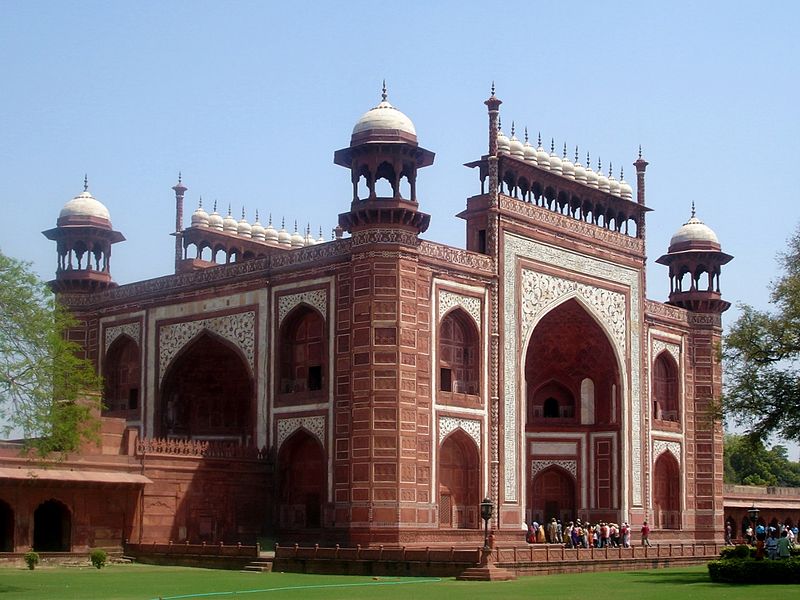
1632–1653
Agra, India
Here is an image of the interior of this magnificent building:
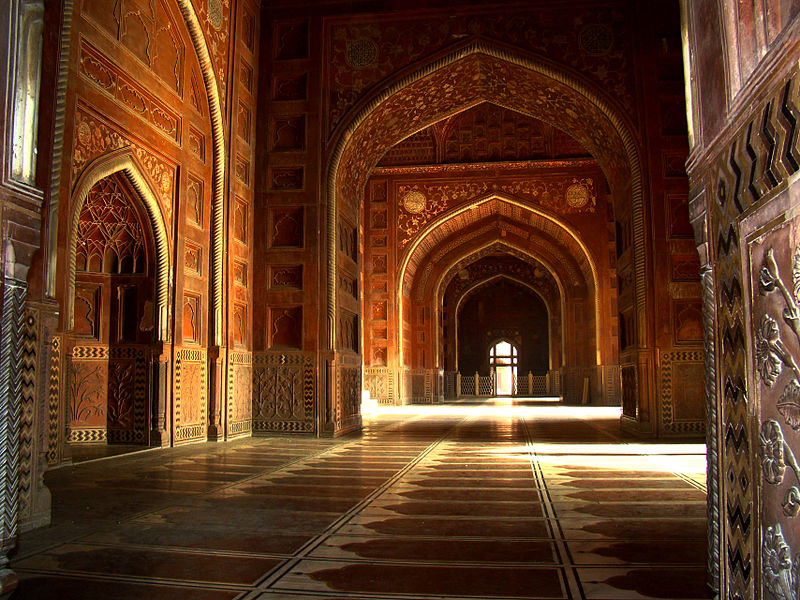
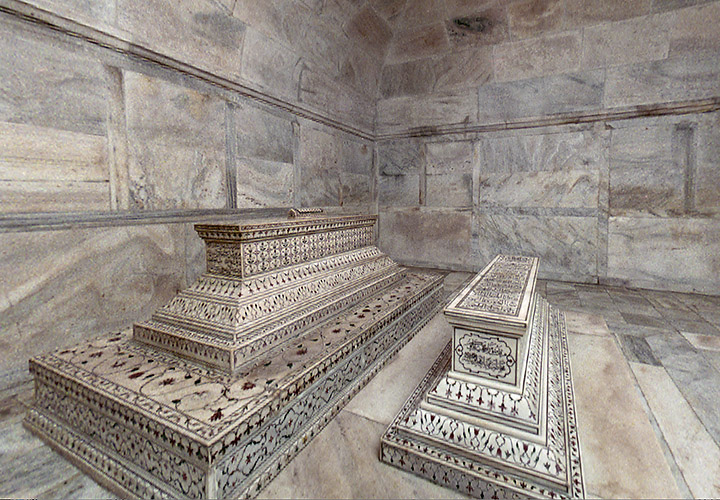
Source: This work is adapted from Sophia author Ian McConnell.